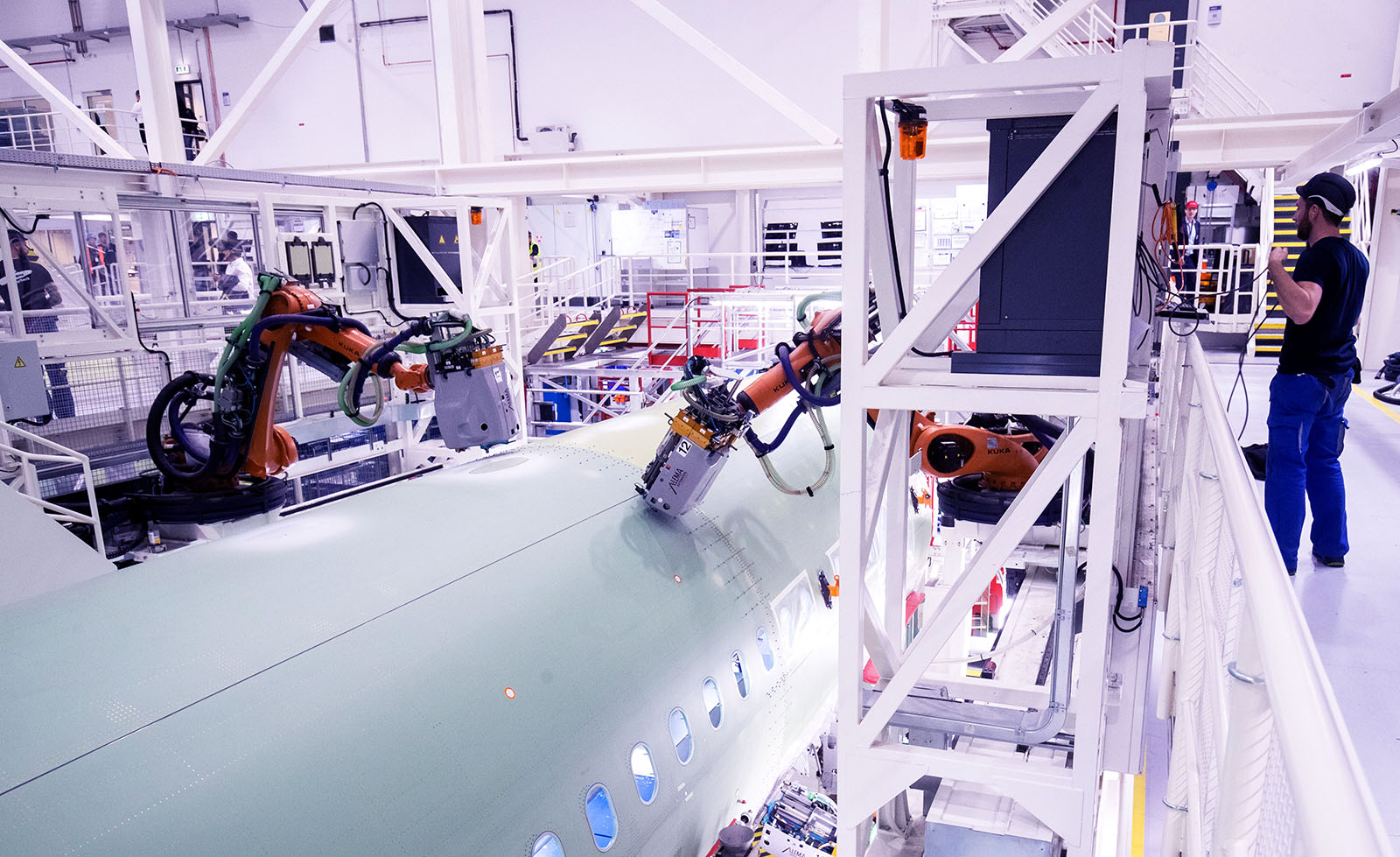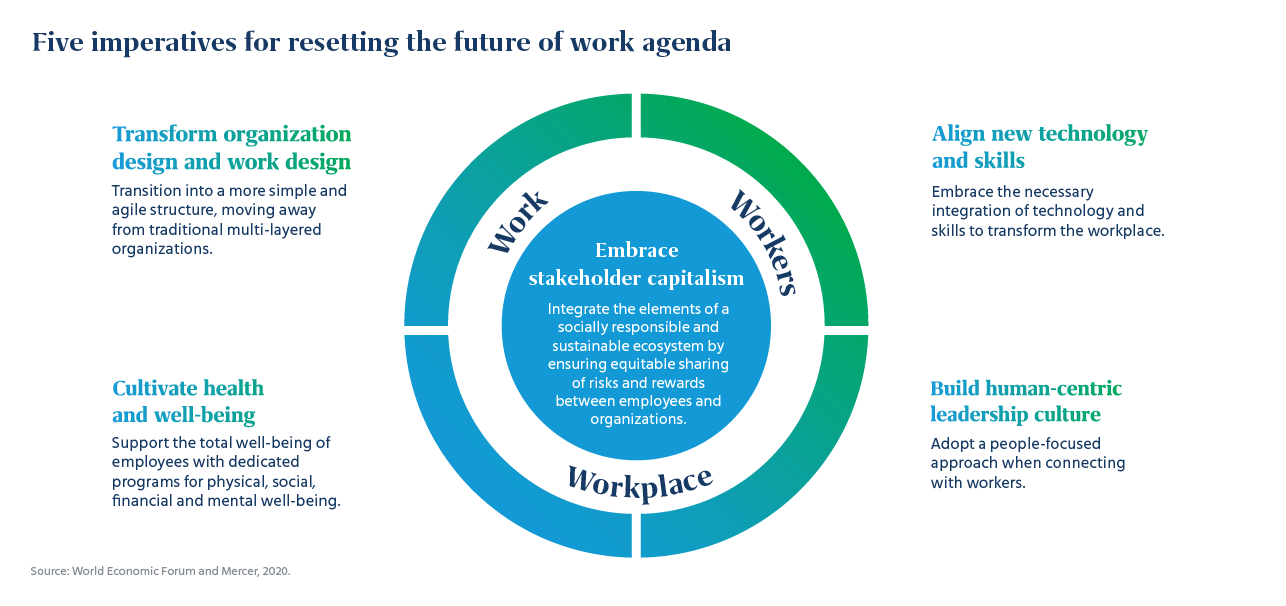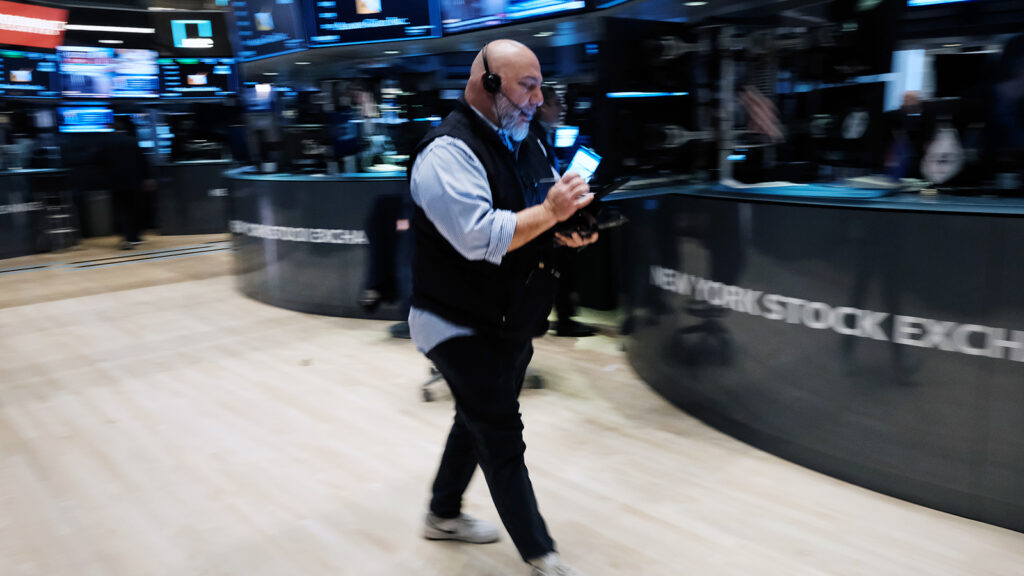What People Value From Employment Has Changed

A technician watches robots working on a fuselage segment of a plane at a factory in Hamburg, northern Germany. AI can help uncover gaps, as well as biases in talent flows and patterns of practice.
Photo: Christian Charisius / dpa / AFP via Getty Images
Working from home is serving as a safer way to work during the pandemic, but workplace flexibility practices are part of the larger evolution around how and where work gets done. Currently, remote work is largely a reaction to COVID-19, but it’s time for business leaders to review and adjust their approach, taking into consideration employee preferences and longer-term sustainability
BRINK News asked Kate Bravery, global advisory solutions and insights leader for Mercer, for her perspective on the future of work — which, in some ways, has arrived earlier than expected. This is part two of a two-part interview. Part one can be found here.
Human-Centric Leadership
BRINK: What should companies think about as they prepare for the Future of Work?
BRAVERY: Prior to the pandemic, conversations about the future of work focused on the impact of job automation and tended to focus on white-collar workers. COVID-19 has changed the dialogue toward a broader range of shifts in how and where we work and who is impacted. Collaborating with the World Economic Forum, we’ve identified five imperatives critical for resetting the future of work agenda: transforming organization and work design, aligning new technology and skills, cultivating health and well-being, building human-centric leadership culture and embracing stakeholder capitalism.
BRINK: What does human-centric management mean in practice?
2021 will demand leaders to balance empathy and economics in their decision-making and communicate with the openness and humility we’ve seen many leaders exhibit during this time. I spoke to an airline’s chief human resources officer who said, “It’s frightening to do a weekly ‘ask me anything’ session when we don’t have the answers, but it’s changed the relationship between employees and management for the better.”
Like many, they have adopted new ways to quickly assess sentiment and get feedback on their own leadership. This is human-centric management in action. The increase in employee-sensing methods, persona-based insight and tailoring messaging to diverse groups based on their unique needs are hallmarks of companies that strive to get this right.
Practicing human-centric management also means knowing your people and showing you care. Two in five HR leaders acknowledge they don’t know what skills they have in their workforce today, and just 25% are seeking to realign benefits. In a remote-first environment, it’s even more critical to know someone is invested in your health, wealth and career.
Better Benefits
Clearly, health provision, care-giving benefits, access to the internet and digital tools elevated in priority since the pandemic began. Preliminary results from Mercer’s 2021 Global Talent Trends study revealed that 65% of companies globally are re-examining what is most relevant to different groups.
The conversation is shifting from “employee costs” to the level of “employee investment” needed to attract and retain workers and ensure they are healthy and productive. With the necessary transition from transactional employment relationships to more trust-based ecosystems, there is closer examination from both workers and employers of what they both value out of the relationship. Keeping pace with new expectations requires a total rethink of the success metrics that drive leaders’ decisions.
Transformation in HR
Many HR teams have had to embrace hybrid-operating models during the pandemic. This trend is breaking down functional silos and barriers between global and local operations. As we come out of this period, many are looking to preserve this agility and better recognize the diverse needs in their workforce. Some are looking to refocus HR roles toward persona groups over having their expertise hardwired into functional roles, for example, an HR partner focused on the needs of remote hires that have yet to build their network or on those leaders needing to balance work and homeschooling. New roles such as “empathy coach,” “crisis management” and “distraction monitor” represent a growing a trend towards a greater focus on humans and the human condition.
Automation and Older Workers
BRINK: Has COVID accelerated the adoption of AI?
No doubt the pandemic has hastened plans to embrace new technologies. Half of companies have picked up the pace in automating tasks, and executives see digitization as a key lever for success in 2021. Both have significant implications for jobs and re-skilling.
Clearly, the adoption of AI presents risks and opportunities. For employees, the risk is that many sought-after digital skills may eventually become automatable. For the employer, an overemphasis on digital skills may leave companies solving near-term needs and missing vital opportunities to drive creativity. Embracing creative disruption and fostering a focus on life-long learning is key. Knowing what skills will drive future value and its implications — such as which loaned skills need to be transferred into internal capabilities — make a difference to the speed and direction of re-skilling. This period is a chance for companies to reinvent their approach to how work gets done and to ensure workers are prepared for the new shape of work. What is becoming clear is that successful reinvention is a learning issue, not a job issue.
Debates around re-skilling and the future of work also tend to overlook older workers, ignoring both their willingness to develop their careers — only 37% of baby boomers believe career support is available for them — and the experience they bring to the organization. Early results from our 2021 Talent Trends study reveal a mere 6% of companies incentivize employees close to retirement age to share their knowledge and expertise and very few have adequately thought through phased retirement. Given that the jobs of tomorrow will increasingly turn on human interactions, failing to leverage older workers’ wisdom and learning to develop the next generation is a missed opportunity.
Stakeholder Empathy
BRINK: What impact will AI have on stakeholder capitalism?
BRAVERY: Stakeholder empathy — particularly the increased focus on employees as stakeholders — is a key theme that emerged during 2020. Equitable sharing of risks and rewards between workers, senior executives, companies and shareholders will be critical as we recover from the pandemic. Nearly one in three companies say managing inclusively and empathetically has become more critical for future resilience, and employees shared that they are seeking out employers committed to making progress on environmental and social issues.
COVID-19 was not the only issue that changed our thinking in 2020. Black Lives Matter prompted companies to consider their commitment to diversity, equity and inclusion (DEI) and prompted employees to take a stance where institutions had been stagnant on progress. With women and minority groups disproportionately impacted by COVID-19, it’s critical to put purpose, diversity and sustainability at the heart of transformation efforts.
AI has the potential to level the playing field in many areas but often requires human oversight to ensure that biases in datasets are not propagated. Much attention has been given to the impact of AI in talent acquisition ─ those that were not using AI-driven remote proctoring for psychometrics and/or automated video sifting started to embrace these practices during the pandemic. We are now seeing AI being applied to re-skilling, pay-for-skills modeling and outplacement services to offer tailored advice on what skills people might acquire to make themselves more marketable. These tools have the potential to transform the talent landscape and in turn upend HR. The challenge now is to combine data with human intuition to make the most of these advances.
AI can also help uncover gaps and biases in talent flows and patterns of practice. Most progress is happening between companies and with public/private cooperation around preparing people for the future of work. However, without dashboards that take a multi-stakeholder view — placing progress on a wider range of success metrics side by side — and metrics that focus on the experience (including that of contingent talent) alongside productivity and sales, these aids won’t move the needle. When multi-stakeholder metrics are embedded into dashboards and cascaded, great things can happen, from responsible investing to net-neutral job losses to offsetting the impact of creative destruction in a community by a focus on re-skilling and well-being outreaches. This shift toward “collective responsibility” is a growing trend not to ignore in 2021.







